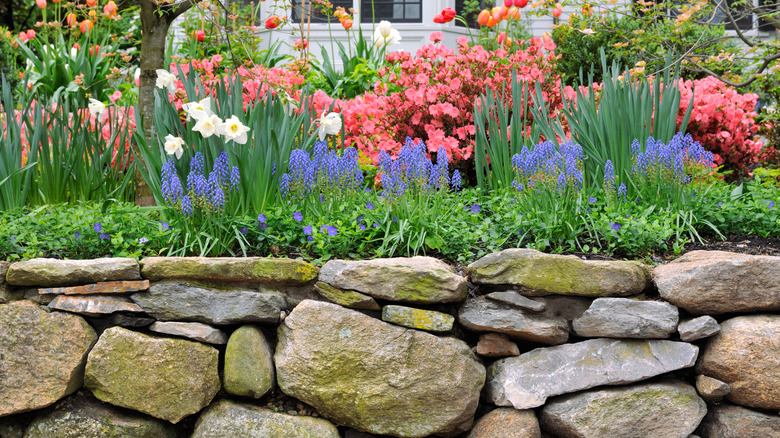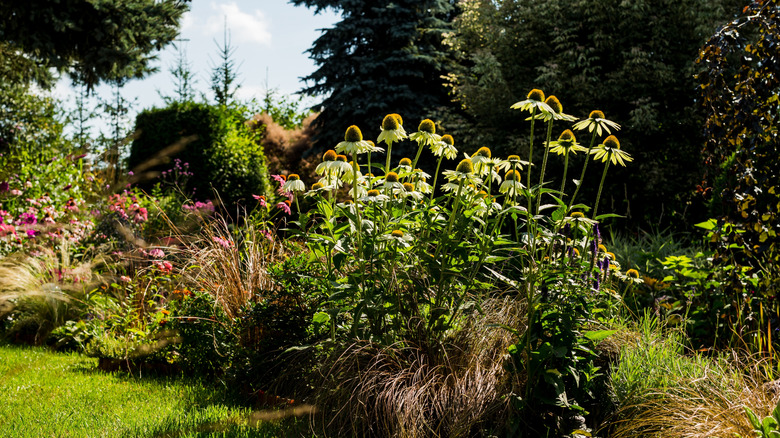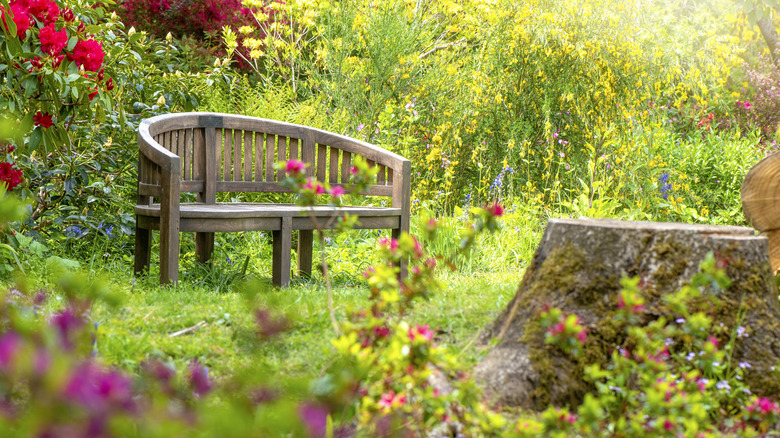The Landscaping Trend That's Bringing Timeless Appeal To Outdoor Living Spaces
In the world of landscaping, there seems to be a subtle shift away from the conventional, as homeowners and designers begin to look beyond traditional lawn styles. In place of uniform stretches of grass, naturalistic hardscaping introduces a unique blend of plant life, stones, and organic elements. This approach to outdoor spaces prioritizes stunning features with a splash of functionality, transforming ordinary yards into works of art. Whether it's the allure of a winding path or a breathtaking stopping point, there is no denying that naturalistic hardscaping is on the rise, bringing a new level of sophistication to your garden.
At its core, naturalistic hardscaping relies heavily on the natural landscape that surrounds each yard, incorporating native plant life in the process. Each yard will appear different depending on the region in which it is located, reflecting its surroundings. The use of stone, gravel, and other natural materials helps to complement the original environment, rather than overpower it. Traditional lawns often remove existing features to achieve the uniform, flat stretch of grass for which the style is known. Naturalistic hardscaping pushes back on this, instead sourcing local materials that complement the existing environment. Native plants are carefully selected for their ability to survive with minimal maintenance, making them both environmentally friendly and visually appealing. The blend of durable materials and greenery creates a landscape that feels both timeless and in tune with its elements. One of the main goals of this style is to conserve materials and curate outdoor spaces that reduce their environmental footprint. By introducing hardscaping into your lawn, you bring a whole host of environmental and aesthetic benefits.
Benefits of hardscaping your lawn
In regard to the aesthetic side of naturalistic hardscaping, this style brings an element of depth and texture to your yard. Dense planting creates the feeling that you are being enveloped in greenery, adding rich variations in shape and color. Plants are often grouped together based on their needs — known as matrix organization – similar to how they tend to coexist in the wild. Focusing on the natural environment doesn't mean less planning, in fact, naturalistic hardscaping requires immense planning in its design, ranging from plant placement, pathing, and focal points. Each element builds off the next to create a stunning visual display, weaving the elements of landscape design into a truly breathtaking outdoor space.
In addition to the aesthetic benefits, there are a number of environmental and practical advantages to your garden. With a growing emphasis on sustainability in gardens, one of the key benefits to such a technique is the reduction of water consumption. By using native plants, hardscaped areas eliminate the need for excess watering and fertilizer, as the plants are already hardwired to thrive in the climate. Additionally, the use of natural elements like local stones reduces the environmental impact of transporting alternative materials, instead focusing on existing sources for pathways and borders. The stone paths can also aid soil drainage and reduce runoff, further reducing the need for excess watering. By minimizing water usage and lawn care, naturalistic hardscaping is an environmentally-friendly alternative to traditional lawn designs. It's a practical solution for homeowners looking to create personal, low-maintenance spaces that conserve resources.
Tips for hardscaping your lawn
If you're considering implementing naturalistic hardscaping into your lawn, it's important to find the right balance between structure and nature. Establishing a thorough plan for your garden is the first step in curating a natural environment. Choosing between native and non-native plant species can be a complicated process, but with a bit of research, you can find simple yet effective additions for your yard. For this step, all you need to do is look outside, taking note of certain natural border plants and greenery in your area's wildscape.. Additionally, identify local sources of materials, whether it's recycling a simple wooden staircase or incorporating a winding rock path. These materials contribute to the sustainability of your hardscaped lawn and are a core principle of the practice. With the materials in mind, you can start planning out your yard, ensuring you'll avoid hard lines and limiting unnatural features.
When planning out your hardscaped garden, you'll want to consider the placement of each element. Plant density is a significant feature of these landscaping designs, but focal breaks are equally as important. Incorporating stone elements in these spots, like a simple bird bath or small wooden bench, can quickly break up the density of your plant life. Retaining walls can also work as excellent focal points around your space, adding an element of height to your yard in the process. By planning out each aspect, you design a space that is unique to your region, highlighting the vast array of plant life in the process. It might be hard to conceive a complete overhaul of your existing yard, but the benefits of naturalistic hardscaping speak for themselves.


